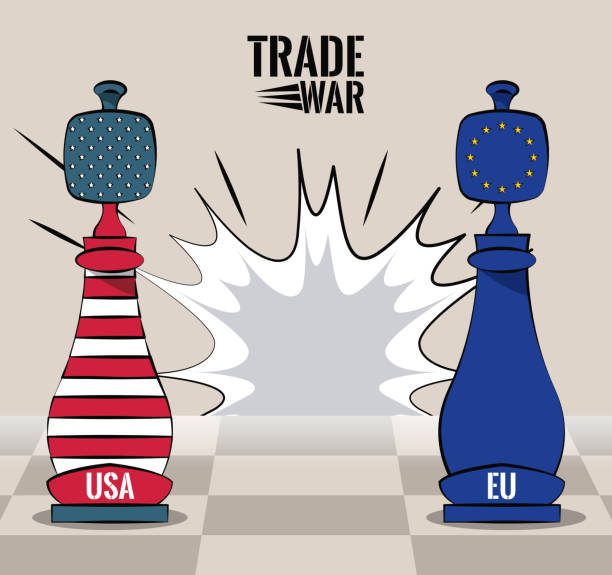According to recent reporting, President Donald Trump has placed the odds of concluding a trade deal with the European Union at roughly fifty‑fifty, even as EU officials express growing confidence that a framework agreement could be reached over the coming weekend.
On 25 July, Trump described the prospects of a U.S.‑EU agreement as “50‑50 chance, maybe less than that,” signalling unresolved tension even after months of complex negotiations. Departure for Scotland—where he planned meetings later with EU Commission President Ursula von der Leyen and UK Prime Minister Keir Starmer—did not dampen his assessment. Trump added that negotiators were working “closely” and hinted that a deal might materialise soon.
August 1 remains the hard deadline set by the U.S. Commerce Department. If no agreement is reached by then, Trump has threatened a blanket 30 per cent tariff on EU imports, with industry‑specific duties already imposed: 25 per cent on autos, 50 per cent on steel and aluminium, and potential new levies on pharmaceuticals, semiconductors, and copper. That deadline is now considered firm, despite earlier extensions.
Deal Outline: 15% Baseline Tariff and Industry Carve‑Outs
EU and U.S. officials are said to be closing in on a compromise that includes a 15 per cent baseline tariff on most EU exports, similar to a recent U.S. agreement with Japan. Select sectors—automobiles, pharmaceuticals, medical devices, aviation, spirits and some manufacturing equipment—may feature tailored lower rates or exemptions.
EU diplomats have indicated readiness to accept such a framework, which would replace the harsher tariff regime Trump has threatened. Brussels is simultaneously preparing retaliatory tariffs worth roughly €93 billion to take effect if talks collapse after 7 August.
Other Trade Fronts: Canada, China and Australia
Trump also downplayed the chance of securing a deal with Canada before the deadline, warning that no substantial progress had been made and that Canada might simply end up paying tariffs rather than negotiating terms. He has threatened to raise Canadian tariffs to 35 per cent, though U.S. officials say imports covered under USMCA may be exempt.
Meanwhile, U.S.‑China trade dialogue is set to resume in Stockholm, and Trump suggested that terms akin to a “confinement of a deal” may emerge from those negotiations. In trade-friendlier news, he welcomed Australia’s decision to lift restrictions on U.S. beef imports, seeing it as a sign of improving relations with allies.
Economic and Market Impacts
European markets have responded positively to the possibility of a trade deal. Stocks in exposed sectors—autos, luxury goods, spirits—rose in anticipation of reduced trade friction. The ECB has held its benchmark rate at 2 per cent, linking its policy pause to uncertainty surrounding U.S.‑EU tariff negotiations and signalling caution until clarity is achieved.
Rising tariffs in the 15 per cent to 50 per cent range pose clear inflationary risks. Several major firms, including Nestlé, Moncler and General Electric, have warned of higher costs and potential price hikes tied to proposed duties.
A Fragile Balance Between Leverage and Lock‑in
At face value, both Washington and Brussels appear to be edging towards a compromise—a 15 per cent baseline with carve‑outs may be the pragmatic middle ground. Yet the window is narrowing rapidly. Trump’s willingness to escalate tariffs to 30 per cent or more gives the U.S. strong negotiating leverage, especially since the EU has prepared substantial retaliation packages. The risk is that internal divisions within the EU over strategy and urgency could weaken its bargaining position.
From a financial perspective, a deal would likely calm markets and avert costly disruptions to supply chains. But the manoeuvres behind the scenes suggest that trade diplomacy remains a high‑stakes game. If Trump remains committed to hardline leverage—especially by threatening uniform treatments across allies—the EU may feel compelled to accept a deal that delivers less favourable terms than the U.K. secured under Starmer.
In short, while a trade agreement might head off immediate tariff pain, the underlying dynamic favours U.S. dominance in framing global trade terms. For Europe, accepting a baseline deal may bring short‑term relief—but it may also signal long‑term concessions with limited reciprocity.


